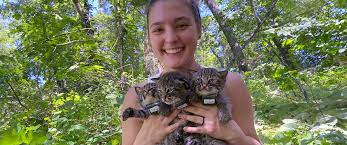A population cycle in zoology is a phenomenon where populations rise and fall over a predictable period of time. There are some species where population numbers have reasonably predictable patterns of change, although the full reasons for population cycles remain one of the major unsolved ecological problems.
A number of factors influence population change, such as availability of food, predators, diseases, and climate.
Occurrence of Population Cycle in Mammal Populations
Olaus Magnus, the Archbishop of Uppsala in central Sweden, identified that species of northern rodents had periodic peaks in population and published two reports on the subject in the middle of the 16th century.
In North America, the phenomenon was identified in populations of the snowshoe hare. In 1865, trappers with the Hudson’s Bay Company were catching plenty of animals.
In 1870, they were catching very few. It was finally identified that the cycle of high and low catches ran over approximately a ten-year period.
The most well-known example of creatures which have a population cycle is the lemming. The biologist Charles Elton first identified in 1924 that the lemming had regular cycles of population growth and decline.
When their population outgrows the resources of their habitat, lemmings migrate, although contrary to popular myth, they do not jump into the sea.
Read Also: Honey Bees: A Closer Look
Other Animal Species That Exhibit Population Cycles

While the phenomenon is often associated with rodents, it does occur in other species such as the ruffed grouse. There are other species which have irregular population explosions, such as grasshoppers, where overpopulation results in locust swarms in Africa and Australia.
Read Also: How Do Honey Bees Reproduce
Predator-Prey Relationships and Population Dynamics

There is also an interaction between prey with periodic cycles and predators. As the population expands, more food becomes available for predators. As it contracts, less food is available for predators, putting pressure on their population numbers.
You have learnt about population cycle, factors contributing to population cycle, and relationships between predators and prey.
There are some species where population numbers have reasonably predictable patterns of change, although the full reasons for population cycles remain one of the major unsolved ecological problems.
Do you have any questions, suggestions, or contributions? If so, please feel free to use the comment box below to share your thoughts. We also encourage you to kindly share this information with others who might benefit from it. Since we can’t reach everyone at once, we truly appreciate your help in spreading the word. Thank you so much for your support and for sharing!
Frequently Asked Questions
We will update this section soon.

